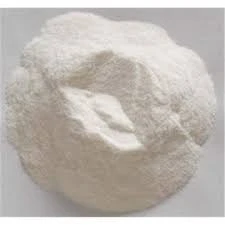
Sep . 22, 2024 18:49 Back to list
hydroxypropyl methylcellulose
Hydroxypropyl Methylcellulose A Versatile Polymer in Modern Applications
Hydroxypropyl methylcellulose (HPMC) is a semi-synthetic polymer derived from cellulose, a naturally occurring biopolymer found in the cell walls of plants. HPMC has gained significant attention in various industries due to its unique properties that make it suitable for diverse applications. This article explores the chemical structure, benefits, and practical uses of HPMC, highlighting its importance in today's technological landscape.
Hydroxypropyl Methylcellulose A Versatile Polymer in Modern Applications
One of the remarkable properties of HPMC is its ability to form a gel when mixed with water, a feature that is particularly valuable in the food industry. As a food additive, HPMC serves as a thickener, emulsifier, and stabilizer, helping to improve the texture and consistency of various products. It is commonly found in ice creams, sauces, and gluten-free baked goods, where it mimics the elasticity and structure provided by gluten. Its use in food products offers consumers a gluten-free alternative without compromising on texture or taste.
hydroxypropyl methylcellulose

In addition to its role in the food industry, HPMC is widely used in the pharmaceutical field. It is employed as an excipient in drug formulations, where it acts as a binder, film-former, and controlled release agent. By modifying the release rate of active pharmaceutical ingredients, HPMC can enhance the efficacy of medications and improve patient compliance. Its non-toxic and biocompatible nature makes it suitable for use in various dosage forms, including tablets, capsules, and topical applications.
The construction industry has also recognized the benefits of HPMC. When used in cement-based products like mortars and tile adhesives, HPMC significantly improves the workability and adhesion of these materials. It acts as a water-retaining agent, preventing rapid drying and allowing for longer working times, which is crucial for achieving high-quality finishes. The polymer's ability to provide better adhesion and flexibility contributes to the durability of construction materials in various environmental conditions.
Moreover, HPMC finds applications in personal care products, such as cosmetics and lotions. It serves as a thickening agent and stabilizer, enhancing the texture and application quality of creams and gels. Its compatibility with a wide range of ingredients allows formulators to create innovative products that cater to consumer preferences.
In conclusion, hydroxypropyl methylcellulose is a versatile polymer that plays a crucial role across various industries, including food, pharmaceuticals, construction, and personal care. Its unique properties, such as solubility, thickening capacity, and stability, make it an essential ingredient in many formulations. As research continues to unveil new applications and benefits of HPMC, its significance in modern technology and everyday products is likely to grow, offering exciting opportunities for innovation and improvement.
-
Versatile Hpmc Uses in Different Industries
NewsJun.19,2025
-
Redispersible Powder's Role in Enhancing Durability of Construction Products
NewsJun.19,2025
-
Hydroxyethyl Cellulose Applications Driving Green Industrial Processes
NewsJun.19,2025
-
Exploring Different Redispersible Polymer Powder
NewsJun.19,2025
-
Choosing the Right Mortar Bonding Agent
NewsJun.19,2025
-
Applications and Significance of China Hpmc in Modern Industries
NewsJun.19,2025







